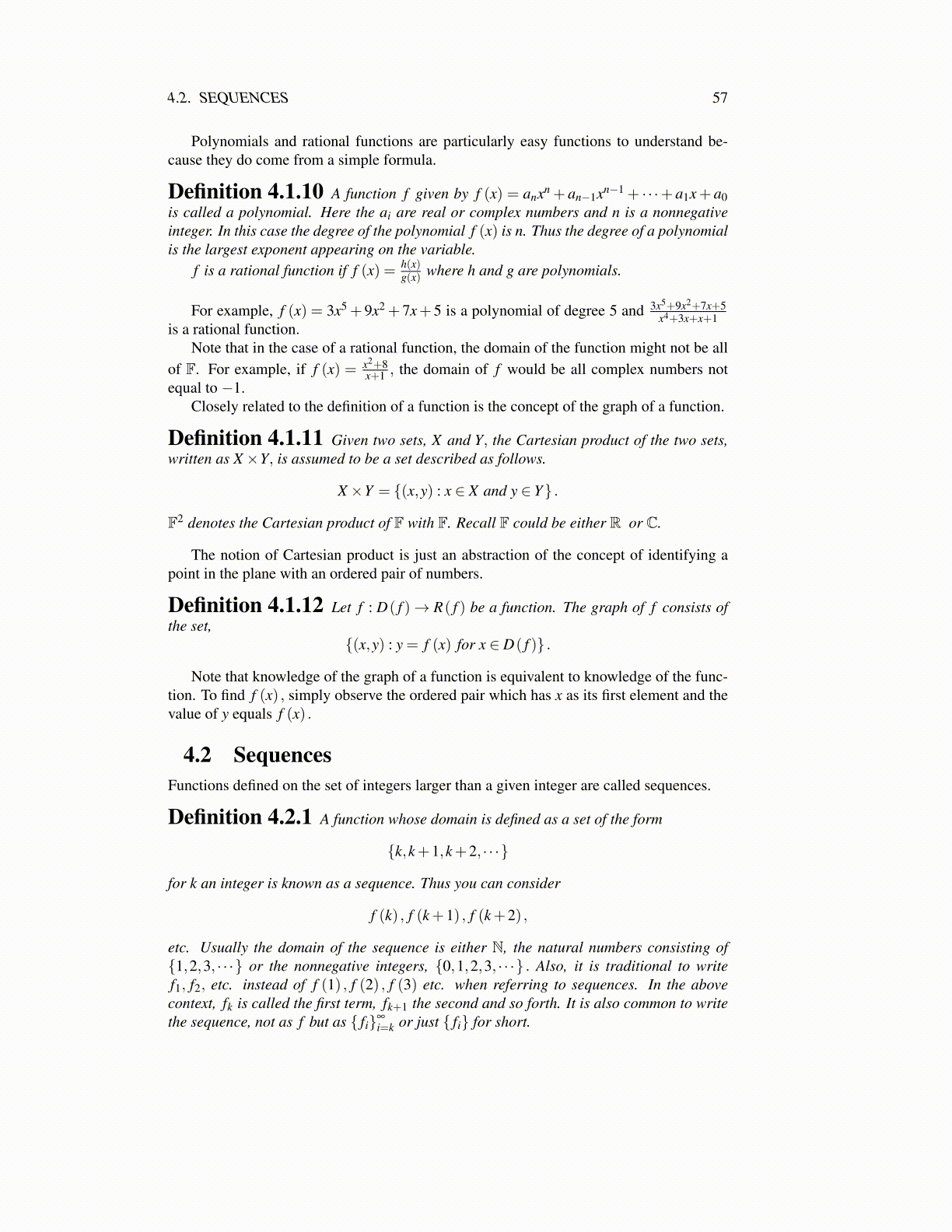
4.3. EXERCISES 57
6. A function f : R→ R is a strictly increasing function if whenever x < y, it followsthat f (x) < f (y) . If f is a strictly increasing function, does f−1 always exist? Ex-plain your answer.
7. Let f (t) be defined by f (t) ={
2t +1 if t ≤ 1t if t > 1 . Find f−1 if possible.
8. Suppose f : D( f )→ R( f ) is one to one, R( f )⊆ D(g) , and g : D(g)→ R(g) is oneto one. Does it follow that g◦ f is one to one?
9. If f :R→ R and g :R→ R are two one to one functions, which of the following arenecessarily one to one on their domains? Explain why or why not by giving a proofor an example.
(a) f +g
(b) f g
(c) f 3
(d) f/g
10. Draw the graph of the function f (x) = x3 +1.
11. Draw the graph of the function f (x) = x2 +2x+2.
12. Draw the graph of the function f (x) = x1+x .
13. Suppose an =1n and let nk = 2k. Find bk where bk = ank .
14. If Xi are sets and for some j, X j = /0, the empty set. Verify carefully that ∏ni=1 Xi = /0.
15. Suppose f (x)+ f( 1
x
)= 7x and f is a function defined on R\{0} , the nonzero real
numbers. Find all values of x where f (x) = 1 if there are any. Does there exist anysuch function?
16. Does there exist a function f , satisfying f (x)− f( 1
x
)= 3x which has both x and 1
xin the domain of f ?
17. In the situation of the Fibonacci sequence show that the formula for the nth termcan be found and is given by an =
√5
5
(1+√
52
)n−√
55
(1−√
52
)n. Hint: You might
be able to do this by induction but a better way would be to look for a solution tothe recurrence relation, an+2 ≡ an + an+1 of the form rn. You will be able to showthat there are two values of r which work, one of which is r = 1+
√5
2 . Next you canobserve that if rn
1 and rn2 both satisfy the recurrence relation then so does crn
1 + drn2
for any choice of constants c,d. Then you try to pick c and d such that the conditions,a1 = 1 and a2 = 1 both hold.
18. In an ordinary annuity, you make constant payments, P at the beginning of eachpayment period. These accrue interest at the rate of r per payment period. Thismeans at the start of the first payment period, there is the payment P≡ A1. Then thisproduces an amount rP in interest so at the beginning of the second payment period,you would have rP+P+P ≡ A2. Thus A2 = A1 (1+ r)+P. Then at the beginningof the third payment period you would have A2 (1+ r)+P ≡ A3. Continuing in thisway, you see that the amount in at the beginning of the nth payment period wouldbe An given by An = An−1 (1+ r)+P and A1 = P. Thus A is a function defined on